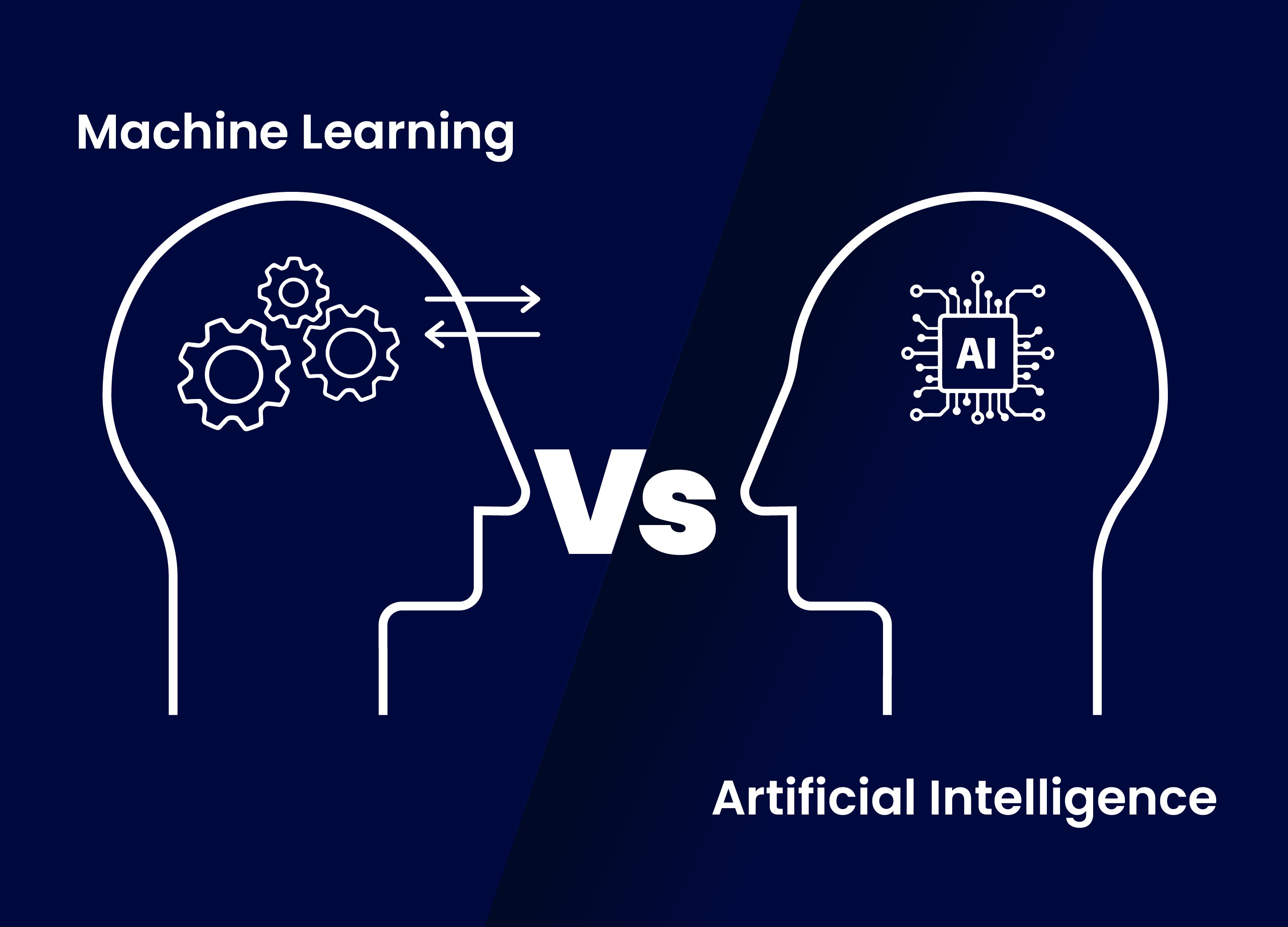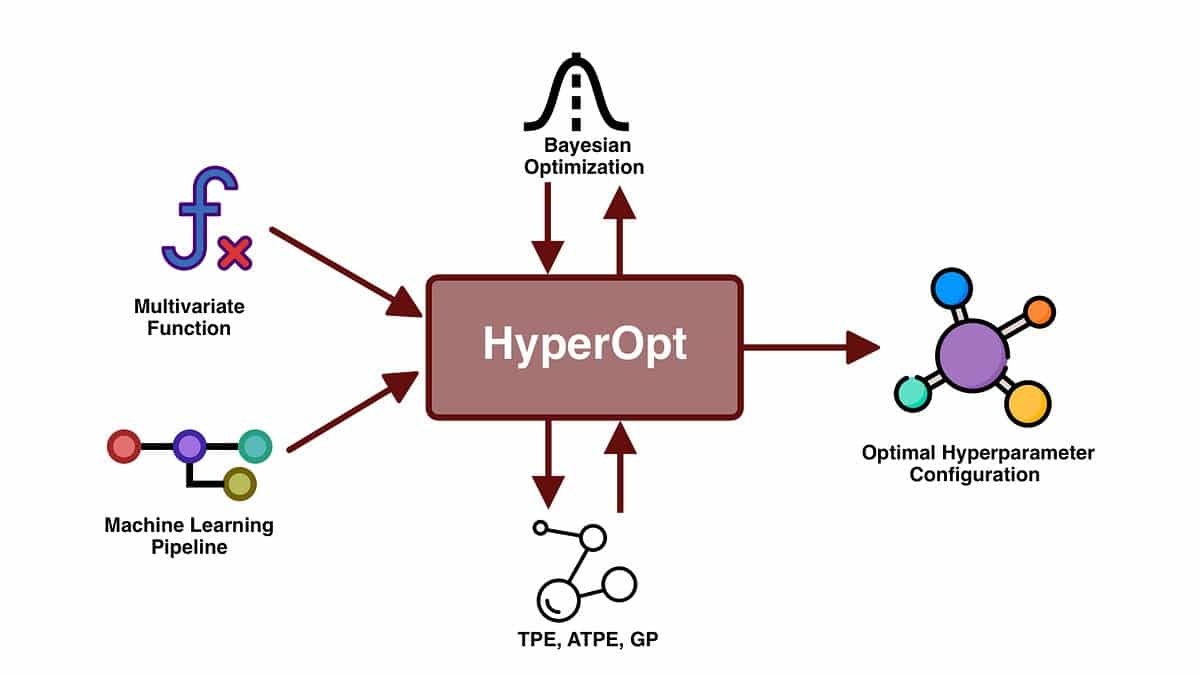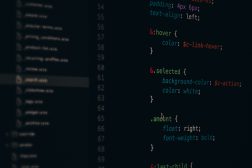Introduction
In today’s rapidly evolving digital landscape, machine learning (ML) applications have become crucial tools for various industries. These applications have the ability to analyze vast amounts of data and generate valuable insights, making them highly valuable for decision-making processes. However, as ML applications become more widely adopted, it is essential to address the potential risks associated with training these applications.
ML applications heavily rely on data to learn and make accurate predictions or decisions. The quality and integrity of the training data play a pivotal role in determining the effectiveness and reliability of these applications. Several risks can arise during the data training process, potentially impacting the performance and outcomes of ML applications. It is vital to understand these risks and implement measures to mitigate them effectively.
This article aims to explore and highlight some of the key risks that data can pose to ML applications during the training phase. By understanding these risks, businesses and developers can take proactive steps to minimize their impact and ensure the robustness and security of their ML models.
Throughout this article, we will delve into various risk factors such as data leakage, model overfitting, bias and fairness issues, inaccurate or insufficient data, label noise, privacy concerns, security breaches, adversarial attacks, and regulatory compliance challenges. Each of these risks poses unique challenges to the efficacy and ethical considerations of ML applications. By examining them individually, we can gain a comprehensive understanding of the potential hazards that need to be managed.
It is important to note that while these risks exist, they are not insurmountable. With the right strategies, techniques, and precautions, businesses and developers can minimize the impact of these risks, creating ML applications that are reliable, accurate, and secure. Throughout this article, we will discuss best practices and measures to address each risk, providing insights on how to mitigate their potential harm.
By being aware of the risks and taking appropriate actions, organizations can leverage the power of ML applications without compromising data integrity, security, and ethical considerations. Let’s now explore the primary risks to data when training an ML application in detail.
Data Leakage
Data leakage is a significant risk that can occur during the training of machine learning (ML) applications. It refers to the unauthorized exposure or unintentional inclusion of sensitive or confidential information in the training data. Data leakage can undermine the integrity, privacy, and security of the ML model, leading to severe consequences for individuals and businesses.
There are several ways in which data leakage can occur. One common scenario is when the training data incorporates personally identifiable information (PII) such as names, addresses, social security numbers, or financial details. If this sensitive information is not properly anonymized or masked, it can be exposed to unauthorized personnel or malicious actors, potentially leading to identity theft or other forms of fraud.
Data leakage can also occur when the training data includes proprietary or confidential business information. For example, if a ML application is trained using sales data that includes pricing strategies or customer lists, this valuable information could be compromised if not adequately protected. Competitors or unauthorized third parties gaining access to such data may exploit it for their advantage, putting the business at a significant disadvantage.
To mitigate the risk of data leakage, several precautions can be taken. First and foremost, it is crucial to conduct a thorough data audit to identify any sensitive information that may be present in the training dataset. This enables businesses to take necessary measures to anonymize or remove the sensitive data and ensure it does not make its way into the ML model.
Another important step is to implement rigorous access controls and encryption mechanisms to safeguard the training data during the entire ML workflow. This involves restricting access to the data, encrypting it at rest and in transit, and implementing strong authentication protocols. Additionally, it is vital to establish clear data governance policies and educate employees or individuals involved in the ML process about the importance of data protection and privacy.
Moreover, organizations should consider adopting privacy-enhancing technologies such as federated learning or differential privacy. These techniques allow ML models to be trained on distributed datasets without the need to expose sensitive data to a central server, further reducing the risk of data leakage.
Proactively addressing the risk of data leakage not only protects sensitive information but also upholds the trust and confidence of customers and stakeholders. By implementing robust data protection measures and adhering to privacy regulations, businesses can demonstrate their commitment to safeguarding data integrity and security throughout the training of ML applications.
Model Overfitting
Model overfitting is a common risk that can occur during the training of machine learning (ML) applications. It refers to a situation where the ML model becomes excessively complex and starts to fit the training data too closely. While this may seem desirable at first, it can lead to poor generalization and inaccurate predictions when encountering new, unseen data.
The primary cause of overfitting is when the ML model is too flexible or has too many parameters relative to the available training data. This causes the model to memorize the training examples instead of learning the underlying patterns and relationships in the data. As a result, the model loses its ability to generalize well and fails to perform effectively on new data.
To mitigate the risk of overfitting, various techniques can be employed. One commonly used approach is to employ regularization techniques such as L1 or L2 regularization. These techniques add a penalty term to the loss function during training, discouraging the model from relying too much on any individual feature or parameter. This helps prevent the model from becoming overly complex and ensures better generalization.
Another effective way to reduce overfitting is through the use of cross-validation. Instead of relying solely on a single training-validation split, cross-validation involves dividing the available data into multiple subsets or folds. The model is then trained and evaluated iteratively using different combinations of these folds. This provides a more robust estimate of the model’s performance and can help identify potential overfitting issues.
Feature selection and dimensionality reduction techniques can also be employed to reduce the risk of overfitting. By selecting only the most informative and relevant features or by compressing the data into a lower-dimensional representation, the model is less likely to overfit on noisy or irrelevant attributes.
Lastly, it is important to strike a balance between model complexity and the available data. If the model is too complex compared to the size of the training dataset, overfitting becomes more likely. On the other hand, if the model is too simple, it may fail to capture the underlying patterns in the data. Finding the right level of model complexity often involves experimentation and fine-tuning based on the specific problem and data at hand.
Model overfitting can significantly affect the performance and reliability of ML applications. By employing appropriate regularization techniques, cross-validation, feature selection, and dimensionality reduction methods, developers can mitigate the risk of overfitting. Implementing these strategies ensures that the ML model generalizes well and achieves accurate predictions on unseen data, leading to more robust and reliable ML applications.
Bias and Fairness Issues
Bias and fairness issues are critical risks that can arise during the training of machine learning (ML) applications. ML models learn from historical data, and if this data contains biases or discriminatory patterns, the resulting model may perpetuate and amplify these biases when making predictions or decisions. This can lead to unfair treatment, unequal opportunities, and discrimination against certain individuals or groups.
One of the primary challenges in addressing bias and fairness issues is identifying and mitigating the biases present in the training data. Biases can manifest in various ways, such as gender, race, age, or socioeconomic status. For example, if historical hiring data exhibits a bias towards certain demographic groups, the ML model trained on this data may inadvertently favor those groups when making future hiring decisions, perpetuating a biased hiring process.
To address bias and fairness issues, it is crucial to carefully curate the training data and ensure it is representative and unbiased. This involves thoroughly examining the dataset for any inherent biases and taking corrective measures, such as rebalancing the data or augmenting it with additional data sources to ensure fair representation of all groups. Additionally, it is essential to establish diverse and inclusive teams involved in the ML process to minimize unintentional biases.
Furthermore, it is important to regularly monitor and evaluate the ML model’s performance for biases. This can be done by analyzing the model’s predictions and decisions across different groups or protected attributes. Several statistical metrics and fairness measures, such as disparate impact analysis or equalized odds, can be used to assess and quantify the fairness of the ML model’s outcomes.
In cases where bias is identified, remedial actions can be taken to mitigate the impact. This may involve introducing fairness constraints during the training process or adjusting the model’s decision boundaries to ensure more equitable outcomes. It is important to strike a balance between fairness and other performance metrics to avoid unintended consequences or trade-offs.
Addressing bias and fairness issues is not only an ethical imperative but also ensures that ML applications are trustworthy and inclusive. By promoting fairness and reducing bias, organizations can build ML models that treat all individuals and groups fairly, provide equal opportunities, and minimize the perpetuation of discriminatory practices.
It is worth noting that bias and fairness issues are complex challenges, and complete elimination of biases may not always be feasible. However, by acknowledging and actively mitigating these biases, organizations can minimize the adverse impact while continuously striving for more fair and equitable ML applications.
Inaccurate or Insufficient Data
Inaccurate or insufficient data is a significant risk that can impact the training of machine learning (ML) applications. ML models heavily rely on high-quality, representative data to learn patterns and make accurate predictions. However, if the training data is inaccurate, incomplete, or does not adequately represent the problem space, it can lead to unreliable and suboptimal ML models.
Inaccurate data refers to data that contains errors, noise, or inconsistencies. This can occur due to various reasons, such as human error during data collection, equipment malfunctions, or data corruption. If the training data is inaccurate, it can introduce biases, outliers, or misleading patterns into the ML model, leading to unreliable predictions or decisions.
Insufficient data, on the other hand, refers to a situation where the available data is limited in quantity, diversity, or quality. ML models require a sufficient amount of diverse and representative data to learn the underlying patterns in the problem domain effectively. Insufficient data can result in overfitting, where the model fails to generalize well on unseen data, or underfitting, where the model fails to capture the complex patterns in the data.
To mitigate the risk of inaccurate or insufficient data, several steps can be taken. Firstly, it is crucial to ensure proper data quality control procedures during the data collection and preprocessing stages. This involves validating and cleaning the data to correct errors, remove outliers, and address missing values. Robust data validation processes, such as cross-referencing data with independent sources or utilizing expert knowledge, can help improve data accuracy.
To tackle the issue of insufficient data, techniques such as data augmentation or synthetic data generation can be employed. By creating additional data instances through various methods, such as random perturbations, transformations, or simulations, the available data can be expanded, leading to better generalization and improved model performance.
Moreover, it is essential to critically analyze the representativeness and diversity of the training data. ML models are only as effective as the data they are trained on. If the training data does not adequately cover the different real-world scenarios or fails to encompass the full range of possible inputs, the model’s predictions may be biased or incomplete. Data sampling techniques, such as stratified sampling or oversampling underrepresented classes, can help address issues of data imbalance and improve the model’s ability to handle diverse inputs.
Regular monitoring and evaluation of the model’s performance using metrics such as accuracy, precision, recall, or F1 score can also provide insights into the adequacy and reliability of the training data. This allows for continuous improvements and iterative data collection processes, ensuring that the ML model remains robust and effective over time.
By addressing the risks associated with inaccurate or insufficient data, organizations can enhance the reliability and performance of their ML applications. Investing in high-quality data collection, robust data validation processes, and data augmentation techniques helps build ML models that provide accurate predictions and valuable insights, leading to better decision-making and improved business outcomes.
Label Noise
Label noise is a significant risk that can arise during the training of machine learning (ML) applications. Label noise refers to errors or inaccuracies in the labeling or annotation of the training data. If the training data contains label noise, it can significantly impact the performance and reliability of the ML model, leading to incorrect predictions or decisions.
Label noise can occur due to various reasons. Human annotators may make mistakes or have different interpretations when labeling the data, resulting in inconsistent or incorrect labels. In some cases, the training data may reflect subjective judgments or opinions, leading to labeling biases that affect the performance of the ML model.
The presence of label noise can lead to a phenomenon known as “learning from noisy labels.” When the training data contains label noise, the ML model may try to fit the erroneous labels, compromising its ability to learn the true underlying patterns in the data. This can result in lower accuracy, reduced generalization, and unreliable predictions when exposed to new, unseen data.
To mitigate the risk of label noise, various approaches can be employed. One method is to perform data cleaning and label correction. This involves carefully analyzing the labeled data and identifying instances with potential label errors. By cross-referencing the data with independent sources or utilizing expert knowledge, erroneous labels can be corrected or removed, ensuring higher data quality for training the ML model.
Another approach is to adopt robust learning techniques that are less sensitive to label noise. Methods such as robust training algorithms, noise-tolerant models, or active learning can help mitigate the impact of label noise on the ML model’s performance. These techniques aim to make the model more resilient to noisy labels and allow it to focus on learning the true underlying patterns in the data.
Ensuring a high inter-annotator agreement is also crucial in minimizing label noise. This involves having multiple annotators label the same data instances and measuring their agreement using appropriate metrics, such as Fleiss’ kappa or Cohen’s kappa. If there is significant disagreement among annotators, it indicates potential label noise and prompts further investigation and clarification.
Regular monitoring and evaluation of the ML model’s performance using appropriate metrics and validation methodologies can help identify the impact of label noise. If the model’s performance deteriorates over time or varies significantly with different subsets of the labeled data, it may indicate the presence of label noise. Monitoring the model’s performance allows for timely adjustments and improvements to mitigate the impact of label noise on the ML application.
By actively addressing label noise, organizations can improve the accuracy and reliability of their ML models. Investing in rigorous data cleaning and label correction processes, adopting robust learning techniques, and promoting high inter-annotator agreement helps build ML models that are more resilient to label noise, leading to more accurate predictions and better performance in real-world applications.
Privacy Concerns
Privacy concerns are a significant risk that can emerge during the training of machine learning (ML) applications. ML models rely on vast amounts of data, and the collection, storage, and processing of this data can potentially compromise individuals’ privacy rights. It is crucial to address privacy concerns to ensure the responsible use of data and maintain public trust in ML applications.
One of the primary privacy concerns is the collection and storage of personal data. ML models often require access to sensitive information, such as individuals’ names, addresses, financial details, or health records. If this data is not adequately protected or anonymized, it can be vulnerable to unauthorized access or breaches, potentially leading to privacy violations or identity theft.
Anonymization techniques can be employed to minimize privacy risks associated with personal data. Data can be de-identified by removing or encrypting personally identifiable information (PII) before using it for training ML models. Privacy-preserving techniques, such as differential privacy, can also be applied to introduce noise or perturbations to the data, providing privacy guarantees while still enabling effective model training and analysis.
Another privacy concern is the potential exposure of sensitive information through the ML model itself. ML models can inadvertently reveal private or confidential information about individuals based on their predictions or decisions. This is known as “model inversion” or “membership inference” attacks. Adequate measures, such as assessing the model’s vulnerability to privacy attacks and implementing privacy-aware design principles, need to be taken to mitigate this risk.
To address privacy concerns, organizations must adhere to privacy regulations and best practices. Compliance with laws like the General Data Protection Regulation (GDPR) or the California Consumer Privacy Act (CCPA) is essential to safeguard individuals’ privacy rights. This includes obtaining informed consent for data collection, implementing data protection measures, providing transparency about data usage, and enabling individuals to exercise their data rights.
Additionally, organizations should adopt privacy by design principles, integrating privacy considerations throughout the ML lifecycle. This involves implementing privacy-enhancing technologies, conducting privacy impact assessments, and maintaining data minimization practices. By prioritizing privacy from the early stages of ML development, organizations can ensure the ongoing protection of individuals’ privacy rights.
Regular monitoring and audits of data handling and ML processes are vital to identify and rectify any privacy vulnerabilities or breaches. It is necessary to have clear policies and procedures in place to respond to privacy incidents promptly, investigate any unauthorized access or breaches, and take necessary actions to remediate the impact.
By addressing privacy concerns, organizations can demonstrate their commitment to protecting individuals’ privacy rights while leveraging the benefits of ML applications. By adhering to privacy regulations, implementing robust privacy measures, and integrating privacy considerations throughout the ML lifecycle, organizations can build trust among users and stakeholders, ensuring the responsible and ethical use of data in ML applications.
Security Breaches
Security breaches pose a significant risk during the training of machine learning (ML) applications. ML models often rely on large volumes of sensitive and confidential data, making them attractive targets for malicious actors or hackers. A security breach can result in unauthorized access to the training data, compromising the integrity, confidentiality, and availability of the data, as well as the trustworthiness of the ML model.
One common security risk is unauthorized access to the training data. If an attacker gains access to the training data, they can manipulate or tamper with it, leading to biased or compromised ML models. This can have severe consequences, such as biased decisions, fraudulent predictions, or the leakage of confidential information.
To mitigate security breaches, strict access control measures should be implemented. This includes limiting access to the training data to authorized personnel only, using strong authentication mechanisms, and encrypting the data both at rest and in transit. Regular security audits and monitoring can help detect unauthorized access attempts and ensure that the necessary security measures are in place.
Another security risk is data exfiltration, where an attacker steals the training data. This can occur through various means, such as exploiting vulnerabilities in the ML infrastructure or unauthorized access to data storage systems. Data exfiltration can lead to severe consequences, including the misuse of sensitive information, intellectual property theft, or financial losses.
To mitigate the risk of data exfiltration, organizations should employ robust cybersecurity measures. This includes implementing firewalls, intrusion detection systems, and encryption protocols to protect the ML infrastructure and data storage systems. Regular vulnerability assessments and penetration testing can help identify and address potential weaknesses in the system, ensuring a secure environment for training ML models.
Ensuring the integrity of the training data is another essential aspect of security. Attackers may introduce malicious data into the training dataset, known as data poisoning, in an attempt to manipulate the ML model’s behavior. This can lead to inaccurate or biased predictions and compromise the reliability of the ML application.
To prevent data poisoning, organizations should carefully curate the training data and employ data validation techniques. This involves checking the data for anomalies, outliers, or suspicious patterns that may indicate an attempt to poison the data. Furthermore, implementing robust anomaly detection algorithms during the training process can help identify and filter out potentially malicious data instances.
Regular monitoring and incident response procedures are crucial to address security breaches promptly. Organizations should have clear incident response policies and procedures in place to minimize the impact of a breach, investigate the cause, and take necessary actions to mitigate any damage. This includes promptly patching vulnerabilities, notifying users or stakeholders, and implementing any necessary corrective actions to prevent future breaches.
By prioritizing security measures, organizations can protect the integrity and confidentiality of their training data, ensuring the reliability and trustworthiness of their ML models. Implementing robust access controls, encryption mechanisms, and monitoring procedures help prevent security breaches and strengthen the overall security posture of ML applications.
Adversarial Attacks
Adversarial attacks pose a significant risk to machine learning (ML) applications during the training phase. Adversarial attacks are targeted attempts to deceive or manipulate ML models by exploiting vulnerabilities in their design or training data. The goal is to cause the ML model to make incorrect or undesirable predictions, leading to potentially harmful consequences.
There are various types of adversarial attacks, each with its own techniques and objectives. One common type is the input perturbation attack, where small, carefully crafted perturbations are added to the input data to mislead the ML model. These perturbations are often imperceptible to humans but can cause the model to misclassify or produce incorrect predictions.
Another type is the model evasion attack, where an adversary aims to create inputs that explicitly exploit the model’s weaknesses, allowing them to bypass security measures or manipulate the model’s behavior. This can be achieved by leveraging gradient-based optimization techniques or by carefully crafting inputs to trigger specific vulnerabilities within the model.
To mitigate the risk of adversarial attacks, organizations need to employ robust defenses. One approach is to implement adversarial training, where the ML model is trained using adversarial examples. This helps the model become more resilient to adversarial attacks by exposing it to potential threats during the training phase. Additionally, using regularization techniques, such as feature squeezing, randomization, or input transformations, can help detect and defend against adversarial attacks.
Another approach is to employ anomaly detection algorithms to identify potentially malicious inputs or behaviors during the training phase. By detecting abnormal patterns or outliers in the training data, organizations can identify potential adversarial attacks and take appropriate actions to mitigate them.
Regular monitoring and auditing of the ML model’s performance is crucial to identify any signs of adversarial attacks. Metrics such as accuracy, precision, or recall may show significant drops, indicating potential attacks or model vulnerabilities. By closely monitoring these metrics, organizations can proactively detect and respond to adversarial attacks, ensuring the reliability and security of their ML applications.
Furthermore, continuous research and development of robust defenses against adversarial attacks are essential to stay ahead of evolving attack techniques. The adversarial landscape is constantly evolving, and organizations must keep up with the latest defense mechanisms and techniques to protect their ML models effectively.
By understanding the potential vulnerabilities and adopting robust defense mechanisms, organizations can minimize the risk of adversarial attacks. Implementing adversarial training, employing anomaly detection algorithms, and monitoring the model’s performance help build more secure and resilient ML models, enabling organizations to leverage the benefits of ML while safeguarding against malicious attacks.
Regulatory Compliance Challenges
Regulatory compliance poses significant challenges during the training of machine learning (ML) applications. ML models utilize vast amounts of data, and ensuring compliance with various regulations and legal requirements is essential to protect individuals’ rights and maintain ethical standards.
One of the primary compliance challenges is adhering to data protection and privacy regulations, such as the General Data Protection Regulation (GDPR) or the California Consumer Privacy Act (CCPA). These regulations govern the collection, storage, and processing of personal data, requiring organizations to obtain informed consent, provide transparency in data handling, and implement appropriate security measures to protect individuals’ privacy rights.
To meet these challenges, organizations must establish robust data governance practices. This involves conducting data impact assessments to identify potential risks and implementing controls and safeguards to protect sensitive data. By documenting and adhering to data protection policies and procedures, organizations can ensure compliance with privacy regulations and demonstrate their commitment to responsible data handling.
Furthermore, regulations regarding data sharing and data transfer add complexity to ML training. In certain domains, sensitive or regulated data may have restrictions on its sharing or transfer. Organizations must navigate these regulations to ensure that data used for training ML models is obtained, shared, and transferred in a manner that complies with applicable laws and regulations.
Another significant challenge is addressing bias and discrimination concerns raised by various regulations. Regulations such as the Fair Credit Reporting Act (FCRA) or the Equal Credit Opportunity Act (ECOA) impose obligations on organizations to ensure fair treatment and prevent discrimination when using ML models for credit scoring or decision-making processes. Organizations must take measures to identify and mitigate bias in the training data and ensure that ML models do not perpetuate discriminatory practices.
Regulatory compliance also extends to the use of sensitive or regulated data, such as medical records or financial information. Industries such as healthcare or finance have specific regulations, such as the Health Insurance Portability and Accountability Act (HIPAA) or the Payment Card Industry Data Security Standard (PCI DSS), that impose strict requirements on data handling and security. Organizations must comply with these regulations when training ML models using such sensitive data, ensuring appropriate safeguards and compliant practices.
To overcome regulatory compliance challenges, organizations must stay up to date with the latest regulations and legal requirements in their specific industry. Establishing internal compliance teams and conducting regular audits can help ensure ongoing adherence to the applicable regulations.
Collaboration with legal and compliance experts is essential to navigate the complex regulatory landscape. By involving these experts throughout the ML development process, organizations can proactively identify potential compliance risks and address them effectively.
By prioritizing regulatory compliance, organizations can not only meet legal obligations but also build trust among customers and stakeholders. Adhering to regulations ensures the ethical handling of data and the development of ML applications that are responsible, transparent, and respectful of individuals’ rights and privacy.
Conclusion
The training of machine learning (ML) applications presents various risks that must be carefully addressed to ensure the effectiveness, reliability, and ethicality of these applications. We have explored key risks, such as data leakage, model overfitting, bias and fairness issues, inaccurate or insufficient data, label noise, privacy concerns, security breaches, adversarial attacks, and regulatory compliance challenges, each requiring specific strategies and precautions.
To mitigate these risks, organizations should prioritize data protection and privacy by implementing robust data anonymization techniques, access controls, and encryption mechanisms. Regular audits and monitoring help detect and address vulnerabilities, and privacy-enhancing technologies ensure ethical treatment of sensitive data.
Overfitting can be mitigated through regularization techniques, cross-validation, and appropriate feature selection methods. Bias and fairness issues require curating unbiased training data, adopting diverse team perspectives, and continuously monitoring and evaluating the model’s fairness.
The risk of inaccurate or insufficient data can be addressed by implementing data quality control procedures, employing data augmentation techniques, and ensuring the representativeness and diversity of the training dataset.
Label noise can be mitigated through data cleaning and correction strategies, robust anomaly detection algorithms, and regular monitoring of the model’s performance. Privacy concerns demand compliance with regulations like GDPR and CCPA, robust security measures, and privacy-aware design throughout the ML lifecycle.
Security breaches necessitate strict access controls, encryption protocols, regular security audits, and incident response plans to prevent and mitigate unauthorized access and data exfiltration. Adversarial attacks can be countered through adversarial training, anomaly detection, and continuous research on defense mechanisms.
Regulatory compliance challenges require organizations to adhere to data protection, privacy, and anti-discrimination regulations, while ensuring secure data sharing and handling practices.
By proactively addressing these risks, organizations can ensure the reliability, security, ethics, and compliance of their ML applications. Implementing best practices, staying updated with regulations and industry advancements, and fostering collaboration between technical, legal, and compliance teams are essential for building responsible, trustworthy, and impactful ML applications.
Effective risk management in ML training leads to more successful and ethical applications that benefit businesses, individuals, and society as a whole. By continuously improving our understanding of these risks and adopting appropriate measures, we can harness the power of machine learning while ensuring its responsible and sustainable use.

























